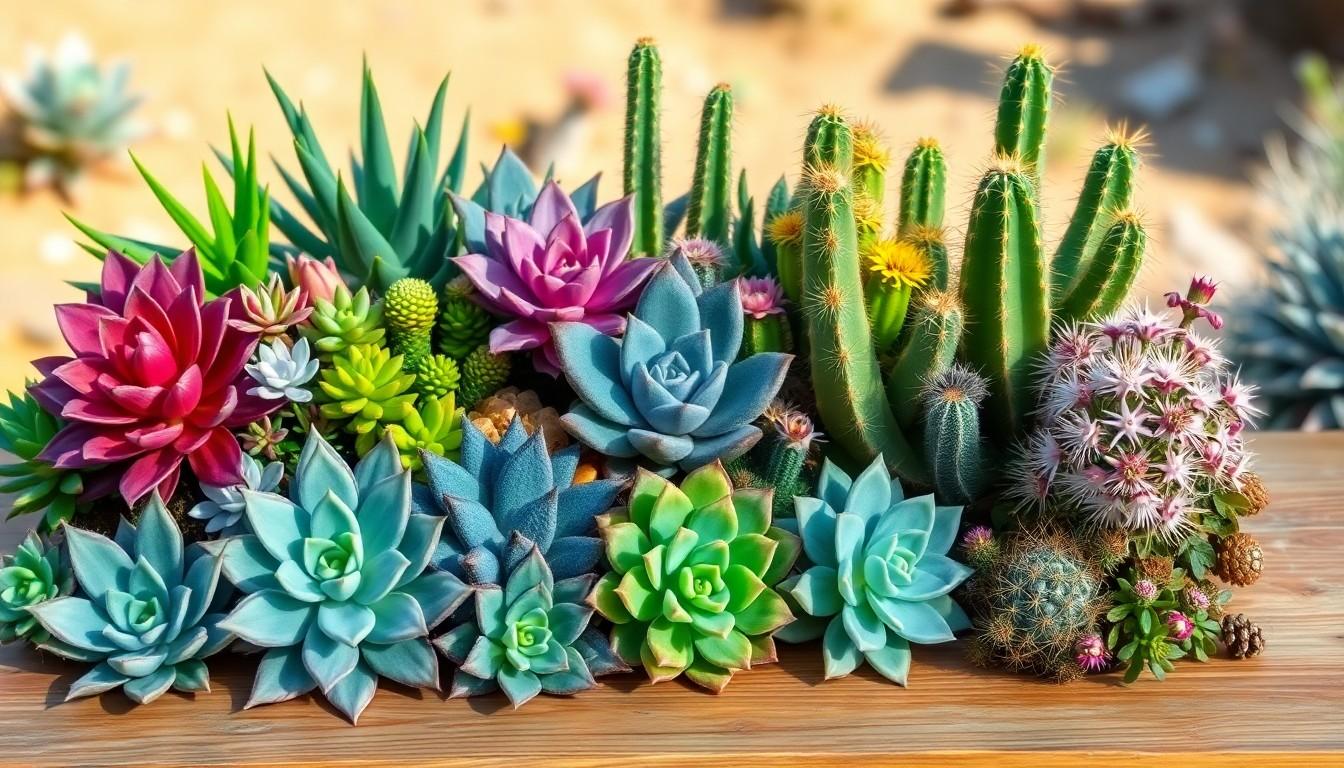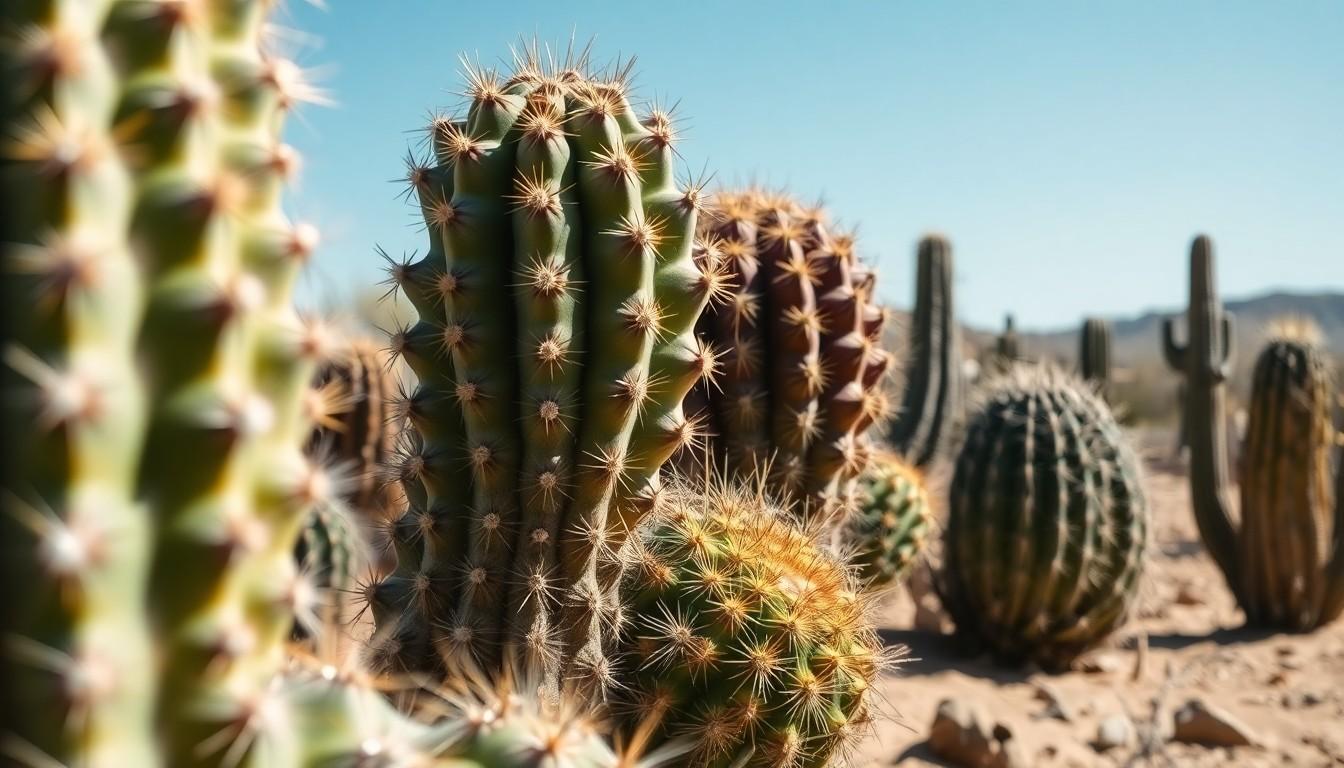Phone:
(701)814-6992
Physical address:
6296 Donnelly Plaza
Ratkeville, Bahamas.

Succulents and cacti often get thrown into the same pot, but are they really the same? While both are champions of low-maintenance beauty, they’re not exactly identical twins. Picture this: succulents are the cool, laid-back friends who can thrive in a variety of conditions, while cacti are the prickly party animals that thrive in the desert.
Succulents represent a diverse group of plants known for their distinctive water-storing tissues. Their ability to retain water allows them to thrive in arid climates, making them popular among gardeners.
Succulents are plants featuring thick, fleshy parts that enable water storage. This characteristic provides resilience against drought, allowing them to flourish in environments where many other plants struggle. Varieties of succulents exist across multiple families, which illustrates their widespread adaptability and versatility.
Many types of succulents exist, each with unique attributes. Common types include:
These variations showcase the extensive range of succulents available, providing options for various preferences and care capabilities.

Cacti represent a unique group of plants that belong to the family Cactaceae. Understanding their defining features and adaptations reveals their specialized nature.
Cacti consist of over 1,500 species characterized by their ability to thrive in harsh conditions. These plants typically grow in regions with low rainfall, predominantly deserts. Unlike succulents, cacti possess areoles, which are small, rounded structures from which spines and flowers emerge. This distinctive feature sets them apart from other succulent plants.
Cacti exhibit several noteworthy characteristics that enhance their survival. Thick, fleshy tissues store water, allowing them to endure long periods of drought. Spines serve multiple purposes: they provide shade, reduce water loss, and deter herbivores. Unique adaptations, such as a waxy coating on their surface, further minimize water evaporation. Cacti also adopt specialized photosynthesis, known as CAM, which enables them to open stomata at night to conserve moisture. Each of these traits showcases the remarkable ability of cacti to adapt to their environment.
Succulents and cacti share characteristics but are distinct groups of plants. Understanding their relationship involves examining their similarities and differences.
Both succulents and cacti store water in their tissues, making them resilient in arid environments. Each type thrives in low-maintenance settings, appealing to gardeners seeking easy-care plants. They exhibit diverse shapes and sizes, adding visual interest to collections. Furthermore, both groups require similar care guidelines, including well-draining soil and infrequent watering. Their ability to adapt to varying light conditions contributes to their popularity among indoor plant enthusiasts.
Cacti belong to the family Cactaceae, while succulents encompass multiple plant families, including Crassulaceae and Euphorbiaceae. Unique to cacti are the areoles, specialized structures from which spines and flowers arise. Succulents, on the other hand, don’t possess these structures. Cacti typically thrive in desert climates, requiring more sunlight compared to many succulents. Additionally, cacti utilize a specialized photosynthesis method called CAM, which conserves moisture by only opening stomata at night. This method differentiates them from many succulents, which may follow standard photosynthesis processes.
Many popular succulent and cacti varieties are treasured by gardeners for their unique beauty and resilience. Both groups offer a diverse selection that appeals to various preferences.
Aloe Vera stands out for its medicinal properties and easy care. Echeveria, known for its rosette shape, adds a charming touch to collections. The Jade Plant, often associated with good fortune, thrives with minimal attention. Sedum varieties offer vibrant colors and textures, making them favorites among enthusiasts.
The Saguaro Cactus captures attention with its iconic shape and impressive height, commonly reaching up to 40 feet. The Christmas Cactus delights with its colorful blooms during the holiday season. Opuntia, or prickly pear, features flat pads and produces edible fruit known for its sweetness. Barrel Cacti, round and stout, often grow in challenging environments and can live for many years.
Understanding the distinction between succulents and cacti enriches one’s appreciation for these unique plants. While both are resilient and adaptable, they belong to different families and exhibit distinct characteristics. Succulents showcase a broader diversity, thriving in various environments, while cacti are specially adapted to desert conditions.
Gardeners can enjoy the beauty and low-maintenance nature of both groups. By selecting the right plants based on their specific needs and preferences, anyone can create a stunning and sustainable garden that thrives with minimal effort. Embracing the differences between succulents and cacti can lead to a more fulfilling gardening experience.